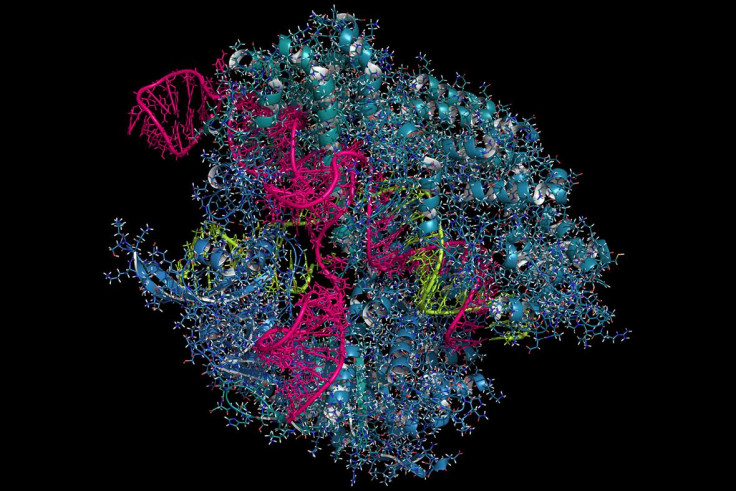Don't worry, Jennifer Lopez's CRISPR drama isn't a forewarning of gene editing doom
There are major limits as to what you can do with CRISPR, but regulation is still essential to prevent mistakes.
Sometimes life really does imitate art, even the high art of science fiction. The video wrist watch warn by Captain Kirk in Star Trek has come into existence but when one considers Scotty beaming people up, how close are we? Not close.
So what about the much talked about NBC bio-terror drama C.R.I.S.P.R due to be produced by the mega-celebrity Jennifer Lopez? How real is this? Should we 'be afraid, be very afraid'?
It's great to see a scientific breakthrough hitting the mainstream and doing it so quickly. The ability to efficiently modify DNA using CRISPR has only become a laboratory reality in the last three years. It relies on technologies developed over the last 50 years and most modern university and hospital labs can get it to work. So in theory you could use it in your shed at home but in reality the equipment and chemicals are still very expensive and it's a bit of an art, like building a plane – the problem isn't that you'll crash, the problem is that DNA is so complicated that you'll probably never take off at all.
But the real reason why CRISPR will affect laboratory science and research, but not take over the outside world, is because there are very real limits to what you can do with it. Those limits aren't a reflection on the technology – CRISPR is great. But they arise from the way we are built and the way we grow.

CRISPR can be used to modify DNA, the blueprint of living things, but mostly this isn't useful. Put simply, imagine you left a cake in the oven and it burnt, CRISPR could help you go back and underline the cooking instructions in the recipe but it's not going to help you fix that cake.
Similarly, for many human diseases the problem will be baked in and CRISPR won't be able to help. It could help if it were possible to modify the genes in the developing embryo but that remains a highly controversial topic and we still don't know if we could do it safely in humans.
Even if some countries decided to do that it would take a long time to test the safety and it would be so expensive that I can't imagine this treatment taking precedent over other available treatments or slipping by undetected and unregulated.
Spreading is the main issue here. Most things one makes with CRISPR won't spread. Via recombinant DNA technology we have been able to modify crops and animals for a long time now and these things have been regulated properly and have not taken over the world. CRISPR is just an easier, cheaper, more efficient and precise way of making modifications.
But couldn't a comic book character spray an opponent with CRISPR or spray themselves to be taller or stronger or smarter. Again they'd have to do this when they were very young – preferably a single cell embryo – but more interestingly it would be hard because our cells are actually very good at blocking entry by foreign DNA.

Not everyone talks about it, but DNA modification occurs in nature all the time. Viruses are just bits of DNA that seek to hijack our cells to replicate themselves. The analogy with computer viruses is useful. But we are constructed in a way that makes us much better at resisting viruses than computers are. Firstly, we have as few portals as possible – though a few viruses do get in through our mouths and noses. Secondly, unlike a computer we are made of many little cells, rather than being one big machine. If any of our cells is struck by a virus it self-destructs and sends a signal that alerts our immune system to mobilise against the invader. We have an extraordinary range of 'anti-viral' strategies that we use to protect us from invading DNA.
This is one of the reasons why 'human gene therapy and gene correction' that is possible in theory is so very hard to achieve in practice. Only a few individuals, perhaps 10 or so children with the immune condition known as 'bubble boy' disorder, have ever been treated successfully and one has to provide lots and lots of DNA in order to eventually get enough of the gene to correct the condition.
But some viruses get in. Couldn't a mad scientist make a super-virus or a super toxin using CRISPR? I guess so, but why bother? There are plenty of deadly agents already out there in nature. I doubt CRISPR could do better.
Or couldn't one change someone's genetic code to disguise them. This would be like changing one word in one book by Charles Dickens and probably only one word in one copy of the book. The cosmetic surgery film Face/Off, though incredible, would be more probable and more effective.
Well couldn't one use CRISPR for personal enhancement? Again it would be mostly too late for yourself, and any children reading this would be better advised to practice piano, tennis, maths etc. if they want to excel in these things, and to go to an orthodontist if they want straighter teeth. We don't even know which genes to change and CRISPR is designed to change one gene at a time.
So should we relax? Not completely. This technology has power. Society should be interested and should watch this. CRISPR is a super power. It can be used in medicine and in agriculture – it can be used for good. But if unregulated there could be mistakes and individual lives could be harmed. We should always remember those wise words – with great power comes great responsibility.
Merlin Crossley is Deputy Vice-Chancellor of Education at the University of New South Wales and Professor of Molecular Biology
© Copyright IBTimes 2025. All rights reserved.






















